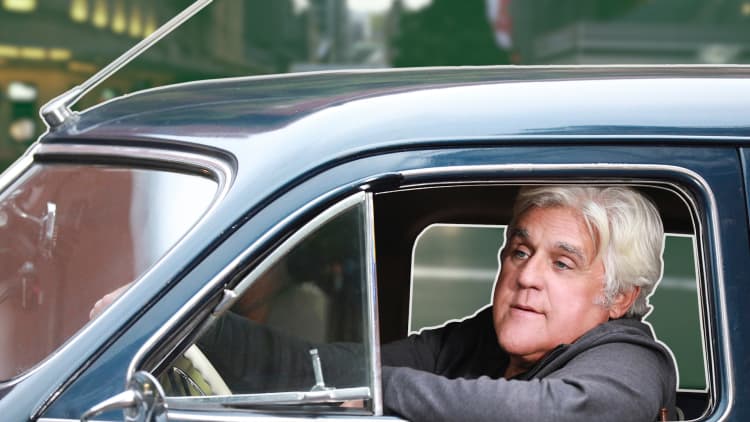Over half of millennials would rather clean their homes than deal with a car salesman. And over 60 percent of people, even those with vehicle-buying experience, believe they've been taken advantage of at some point while car shopping, according to a Harris poll of over 2,000 consumers.
Knowing how to approach a dealership and the price negotiation process can really reduce the anxiety around buying a car — and help you feel confident you're getting a good deal.
Since knowing your stuff can reduce the overall amount you end up paying, it's especially important for younger buyers. "If you're in your early 20s, you not only have your life before you, but you've got a lifetime of expenses ahead of you as well. There are other things to be saving your money and spending it on," Jeff Bartlett, deputy editor of autos for Consumer Reports, tells CNBC Make It.
You don't have to end up feeling confused and exploited when shopping for cars at a dealership. The auto experts at Consumer Reports recommend 10 strategies to help you get the car you want at the price you can afford.
1. Do your homework
Before you even start test-driving a car, research your options to find ones you're comfortable with. The experts at Consumers Reports recommend looking at leasing or purchasing a used car with minimal financing.
Cost is important. Still, when it comes to picking a car, security and dependability are also key components that should not be overlooked, Bartlett says.
In addition to looking on Consumer Reports for comprehensive reviews, Bartlett recommends checking out a car's crash test results from the Insurance Institute for Highway Safety. Buyers should also look into each model's fuel efficiency, which can be found on FuelEconomy.gov.
"All things being equal, you want to choose the model that is going to provide you with both the best safety and reliability," Bartlett says.
2. Build your budget
Once you settle on a few models that check all the boxes, look at the total car costs, including insurance and taxes.
"Even before going to the dealership, pick out a few models you're interested in, and send out some requests to insurance companies to figure out what the insurance costs will be on those vehicles," Mel Yu, automotive analyst for Consumer Reports, tells CNBC Make It.
A new car or a lease will likely have higher insurance premiums.
Likewise, make sure you budget for taxes. "When you're coming up with what the target price is, bear in mind you're going to pay sales tax on the vehicle, as well as delivery charges and documentation fees," Bartlett says. Called doc fees, these are charges passed along by car dealerships to process a vehicle's paperwork.
To make sure you have room in your budget for all those extra fees and charges, he recommends you lower your target price by $2,000 to $3,000. Automotive research site Edmunds offers an array of calculators that will show you what you can afford and what your monthly payments would be.

3. Focus on your daily use
It can be tempting to imagine all the road trips you're going to take in your new car, but Bartlett says you should really focus on your daily use when selecting the model that's best for you.
For example, if that car is primarily going to be used by just you to go back and forth to work, a smaller, gas-efficient car is likely the best bet, rather than an SUV. "They may find just renting a big SUV or minivan for the road trip once or twice a year would be far cheaper and it would keep the miles off their own car," he says.
4. Test drive thoroughly
You're buying a car, not a pair of shoes, so spend some time testing out your potential purchase. And don't feel guilty about the length of the drive. Testing out a car requires more than just a lap around the block.
"We encourage people to take a fairly lengthy test drive, so you have the opportunity not only to evaluate how the vehicle feels and performs in your hands, but also how it rides and the noise," Bartlett says.
He also recommends taking the car on different types of roads, such as the local surface streets around the dealership and the highway. "If need be, ask the salesperson to give you some quiet time so you can listen and focus," Bartlett adds.
Even before you start driving around, Yu recommends sitting inside the vehicle at least half an hour before making any kind of decision.
"The driver who is going to be living with the car needs to be comfortable in the vehicle for a long time," he adds. For example, make sure the steering column is adjustable, and it's not going to give you a shoulder ache.
Take a fairly lengthy test drive, so you have the opportunity not only to evaluate how the vehicle feels and performs in your hands, but also how it rides and the noise.Jeff BartlettConsumer Reports deputy editor of autos
5. Explore all areas of the car
Test-driving the car is only the first step. While the car is parked, take the time to check out other areas of the car, such as the backseat. This is particularly important if you're going to tote along passengers.
"Don't just assume that access is easy and that it's comfortable back there, because that's not always the case," Bartlett says.
Spend a little time sitting in every seat in the car. Often, the seats are only designed for certain people, so they don't comfortably accommodate everyone, Yu says.
Another item to play around with while parked: the entertainment and information console. "With the stereo and entertainment systems becoming increasingly sophisticated, it is worth learning about it and making sure it can support your phone and your interests," Bartlett says.
6. Don't shop and buy on the same day
You can go to a dealership and request a test drive without any intention of buying a car right then. In fact, it's probably for the best. Most experts recommend you do several, in-depth test drives.
Even if you're pressed for time, you should still do your initial test drive on a different day than you plan to actually purchase or lease a car.
"Separate your test drive day, your shopping day, from your buying day," Bartlett says. The natural excitement of testing out a car can cause you to overlook crucial details. Giving some time in between the test drive and the purchase can stop you from spending more or buying something that's ultimately not right for you. Remember, dealerships don't typically accept returns.
Decline any kind of up-sell there is — there's always a better deal you can find.Mel YuConsumer Reports automotive analyst
7. Get pre-approval for financing
Before heading into the dealership to start negotiating your purchase, Bartlett says it's a good idea to get pre-approved for a loan by your local bank or credit union. This not only gives you some leverage but also shows you where your credit score falls and the going rate for a loan.
"If the dealership can meet or beat that, great. If they don't, then there's no obligation there," Bartlett says.
But the interest rate is only the start. You'll need to evaluate the whole pricing package. For example, your credit union might be able to offer a 1.9 percent interest rate on a loan, while the dealer offers 4.9 percent. But if the dealer is willing to throw in a $1,500 instant rebate, that might make its bid more attractive.
"The Finance and Insurance office is probably the trickiest place to navigate," Bartlett says. "The first-time buyer is really going to be out of their element there, so anything that can shore up their negotiating strength and their ability to say 'no' is certainly a good idea."
8. Bring a friend or family member
Having a second opinion is helpful, especially if you're a first-time car buyer. "I'd strongly recommend having an experienced car owner, could be family member or friend, to help them with the process," Bartlett says.
Not only can a companion give advice and insights, they can also help run interference with the sales staff if you need time to evaluate the pricing or vehicle components.

9. Get ready to say 'no' — a lot
The dealership staff will probably try to up-sell you on extras such as extended warranty or pre-paid maintenance packages. These might sound attractive, but really dig into the details before you agree to anything. For example, a popular up-sell is fabric protection for the seats and upholstery for roughly $400. Instead, you could pick up a can of Scotchgard for just a few bucks.
"Decline any kind of up-sell there is — there's always a better deal you can find," Yu says.
10. Be prepared to walk away
Once you've invested a lot of time into finding the right car for you, it can be difficult to walk away if the negotiations aren't going well. But, Bartlett says, don't settle. Though it's tempting to give into the pressure and accept an offer you don't like just to reach closure, or because you're exhausted, hold out.
"The reality is, most mainstream cars sell hundred to several hundred thousand units a year. Whatever you're looking at, that's not the only one you're going to be able to find," Bartlett says.
Don't miss: Ranked: The 6 best cars for first-time buyers under $25,000
Like this story? Subscribe to CNBC Make It on YouTube!




